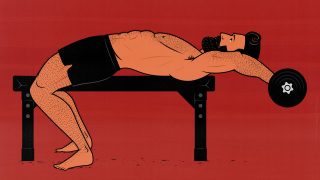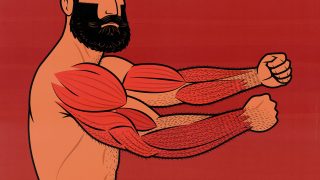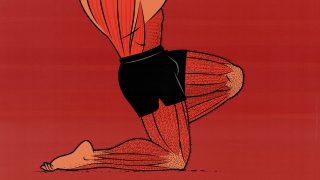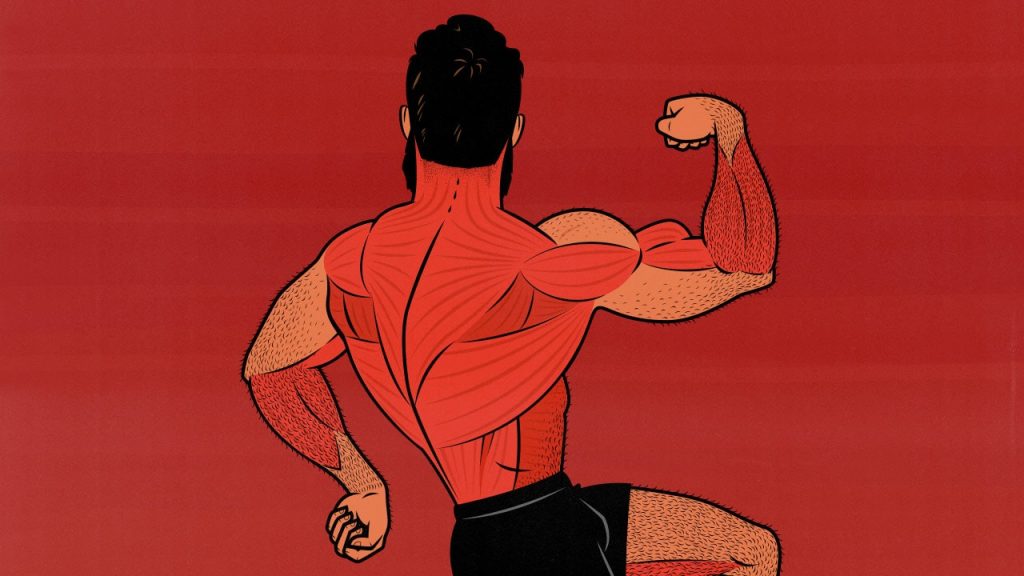
Back Day: The Best Back & Biceps Workout for Building Muscle
Back Day is designed to bulk up your back. It’s part of a Bro Split, so it’s a workout that emphasizes building muscle and improving aesthetics.
Your back isn’t just one muscle group. There are dozens of overlapping muscles, all with slightly different functions, yet all equally eager to grow. We’ll show you how to stimulate all of them.
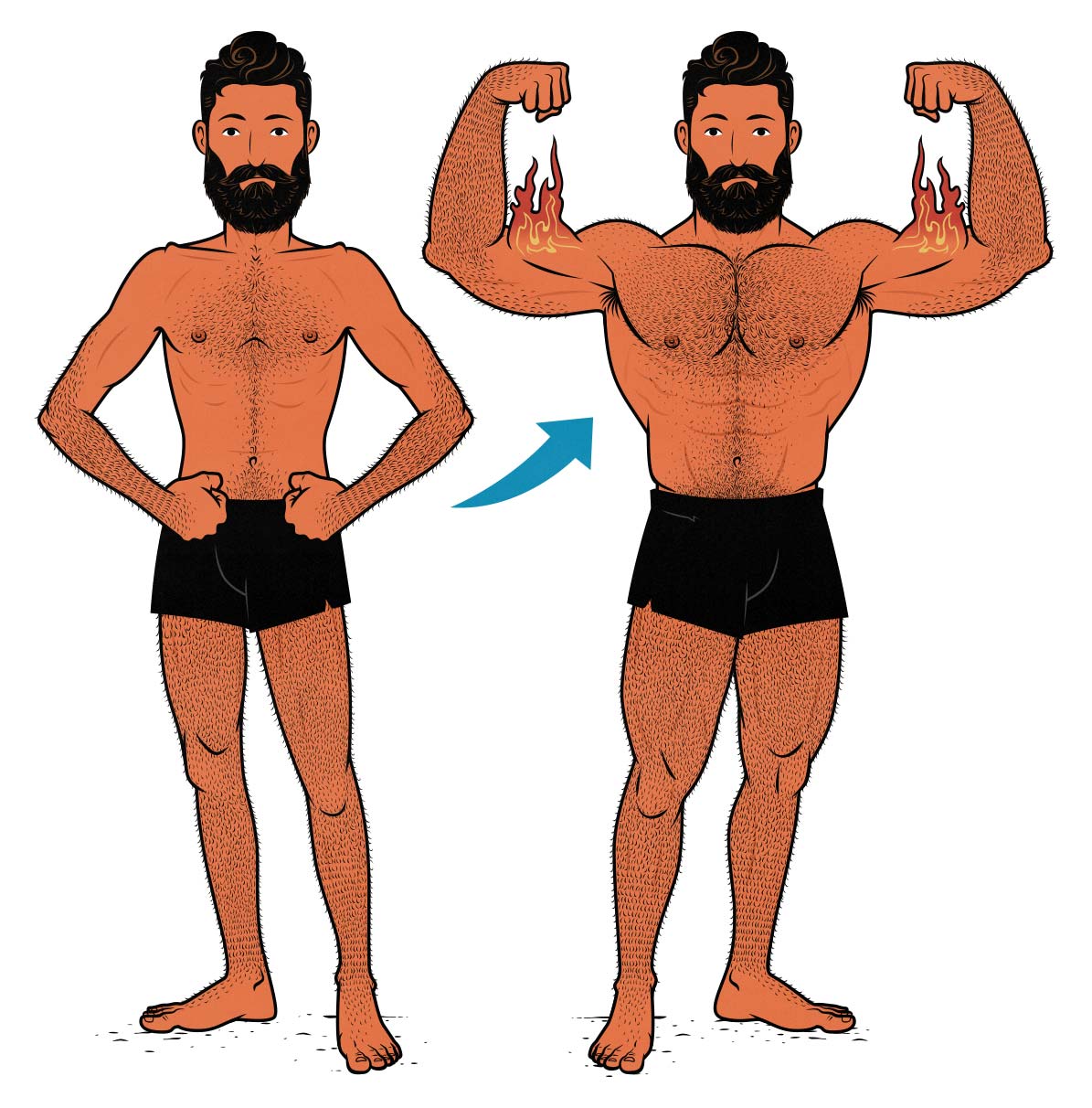
What’s A Back Day?
Back Day is a workout focused on your back muscles. It’s part of a Bro Split routine, where you divide your body into different muscle groups, allowing you to train 4–5 days per week while still giving each muscle plenty of time to recover.
- Monday: Chest Day
- Tuesday: Back Day <==
- Wednesday: Shoulder Day
- Thursday: Leg Day
- Friday: Arm Day
- Saturday: Rest
- Sunday: Rest
Back Days are similar to Pull Days. The difference is that they belong in different workout splits. Back Days go in Bro Splits, whereas Pull Days go in Push/Pull/Legs Splits. That can change how you program the workouts.
Muscles Worked During Back Days
Back Days work your lats, traps, rotator cuff, biceps, forearms, and spinal erectors. You can do that with compound pulling exercises like deadlifts, chin-ups, pull-ups, and rows. You can also add in smaller exercises like lat pulldowns, pullovers, and reverse flyes.
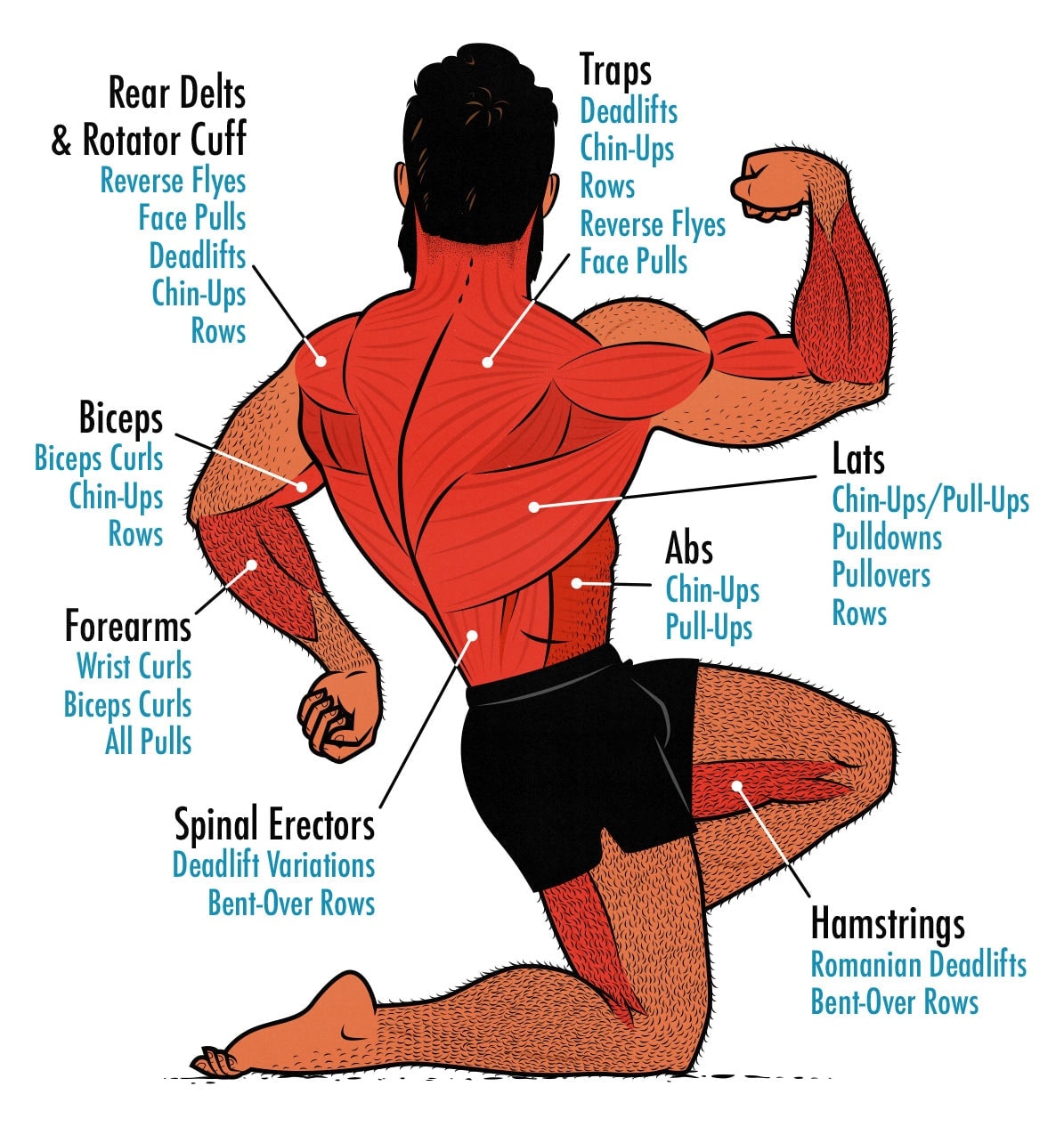
We also recommend sneaking in some biceps exercises. A classic Bro Split has only one dedicated Arm Day. That’s fine, but your biceps will grow faster if you train them twice per week. We recommend training them on Arm Day and Back Day.
The Best Back Day Exercises
Back exercises are often divided into vertical pulls (like pull-ups) and horizontal pulls (like barbell rows). That isn’t quite the right way to think about it.
Both vertical and horizontal pulls train your lats and rotator cuff; it’s just that vertical pulls train them through a deeper range of motion. What makes some horizontal pulls special is that they also train your spinal erectors. That gives us the maxim:
- “Vertical pulls for a wide back.” Vertical pulls work your lats through a deeper range of motion than horizontal pulls, stimulating more muscle growth (full explanation). This will indeed make your back wider.
- “Horizontal pulls for a thick back.” Some horizontal pulls, such as deadlifts and barbell rows, bulk up your spinal erectors, making your back thicker.
That’s all well and good, but when programming a good Back Day, it helps to train every function: shoulder extension (chin-ups), adduction (pull-ups), external rotation (face pulls), retraction (deadlifts), and postural support (deadlifts). We break it all down in our article on back training.
You don’t need to memorize everything, though. We’ll give a ton of examples below, along with some workouts you can follow. With a bit of practice, you’ll get a good feel for which muscles each exercise works.
Do Deadlifts Belong on Back Day?
Deadlifts are the king of back exercises. They work all of your back muscles quite hard, but they’re especially good for your traps and postural muscles, giving you a thicker, sturdier back. They also work your hips and grip, making them one of the best overall muscle-building exercises.
You could banish deadlifts to Leg Day, but there’s only one Leg Day per week, and it helps to train your spinal erectors more often than that. I recommend including them if you can.
Here are some of the best deadlift variations:
- Conventional deadlifts: Great for emphasizing your spinal erectors.
- Sumo deadlifts: Great for making deadlifts a little bit easier on your spinal erectors.
- Romanian deadlifts: Great for your hips and hamstrings. Maybe save these for Leg Day.
- Trap-bar deadlifts: Similar to conventional deadlifts, but quite a bit easier to grip.
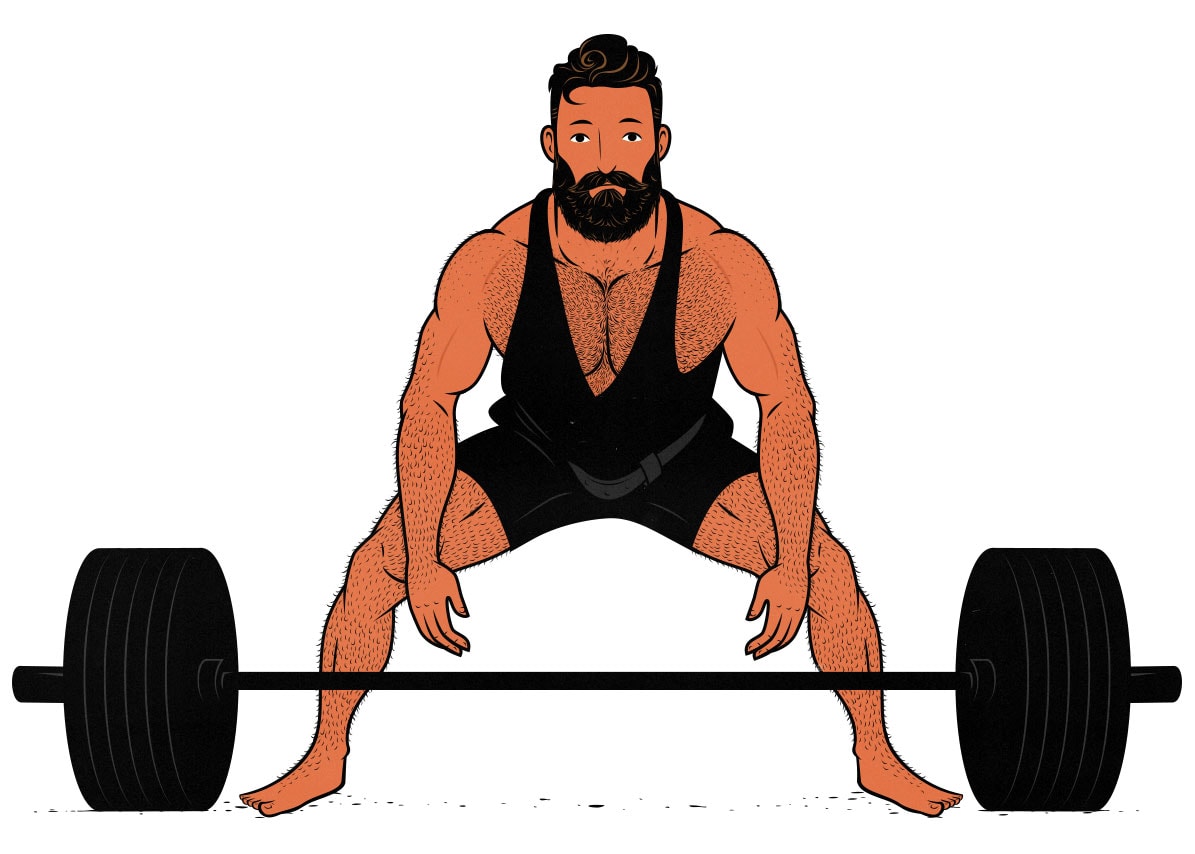
Horizontal Pulling Exercises
Horizontal pulling exercises are similar to deadlifts. The difference is that you use your lats and arms to pull the weight towards your torso.
- Bent-over rows: These offer many of the same benefits as deadlifts. If you aren’t deadlifting, they make for a great default choice. If you are deadlifting, maybe choose a different row.
- One-arm dumbbell rows: These are perfect for beginners. They’re simple, easy on your spinal erectors, and great for bulking up your lats and rotator cuff.
- Seated cable rows: Great for working your spinal erectors and lats through a deep range of motion. You can round forward at the bottom, stretching out your back muscles.
- T-Bar row machines: Great for bulking up your lats and upper back. If you support your chest, your spinal erectors won’t be a limiting factor. They’re harder at the bottom than most pulling exercises, giving them a great resistance curve for stimulating muscle growth.
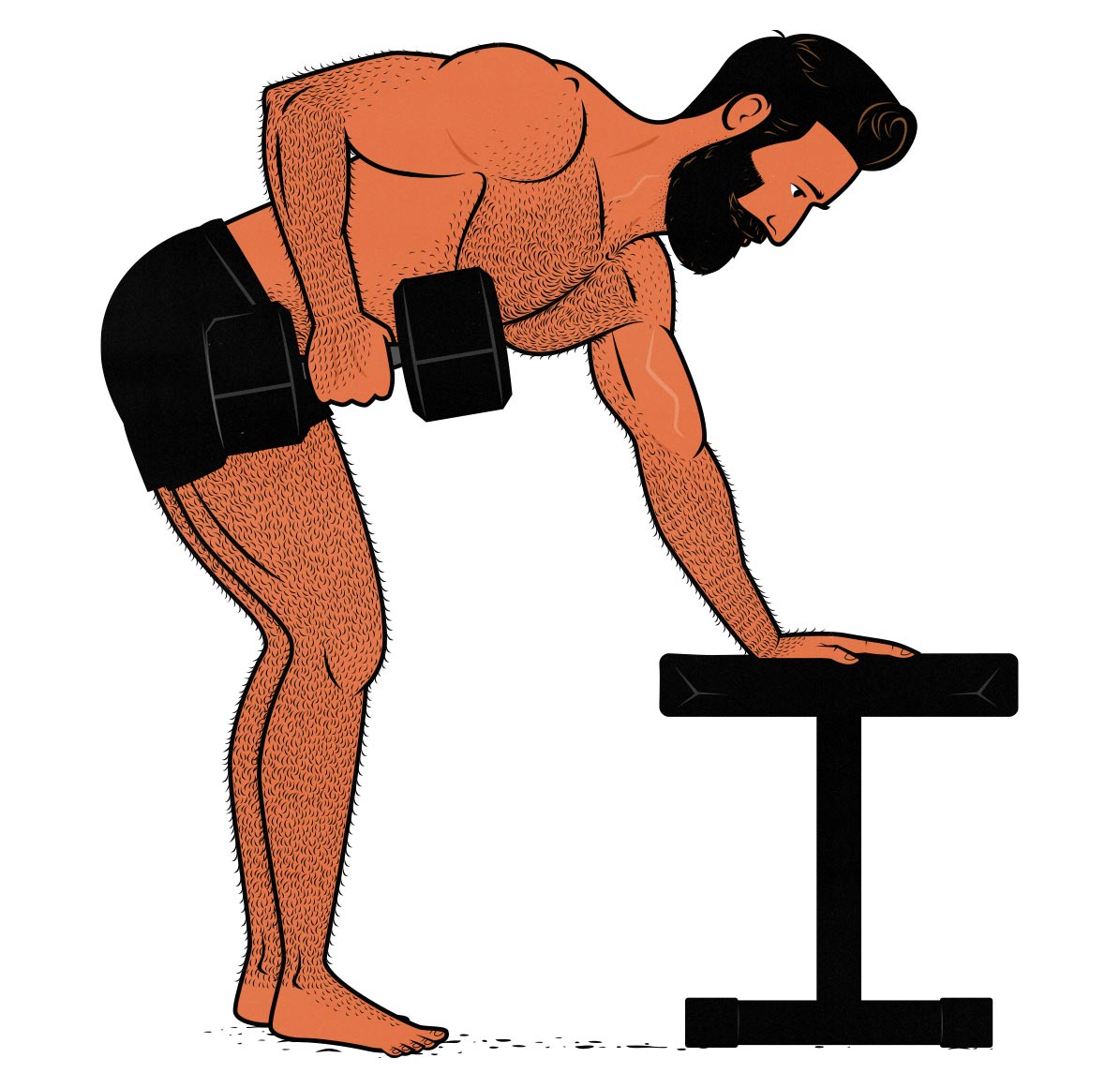
Vertical Pulling Exercises
Vertical pulling exercises work your lats and rotator cuff through a huge range of motion, which is fantastic for bulking them up (study). Many of them work your abs instead of your spinal erectors, rounding out your core development.
- Chin-ups: The biggest vertical pulling exercise. They work most of the muscles in your back, along with your biceps, forearms, and abs. These make for a great default. However, not everyone is strong enough for them.
- Pull-ups: Very similar to chin-ups. Your biceps won’t be able to help as much, but your lower lats might get worked a little harder. This is a challenging exercise. They’re heavier than chin-ups.
- Pulldowns: Great for beginners. A narrower underhand grip is great for your biceps and upper lats, and it will develop the strength you need for chin-ups. A wider overhand grip is great for your lower lats, and it will prepare you for pull-ups.
- Pullovers: Great for challenging your lats under a deep stretch.
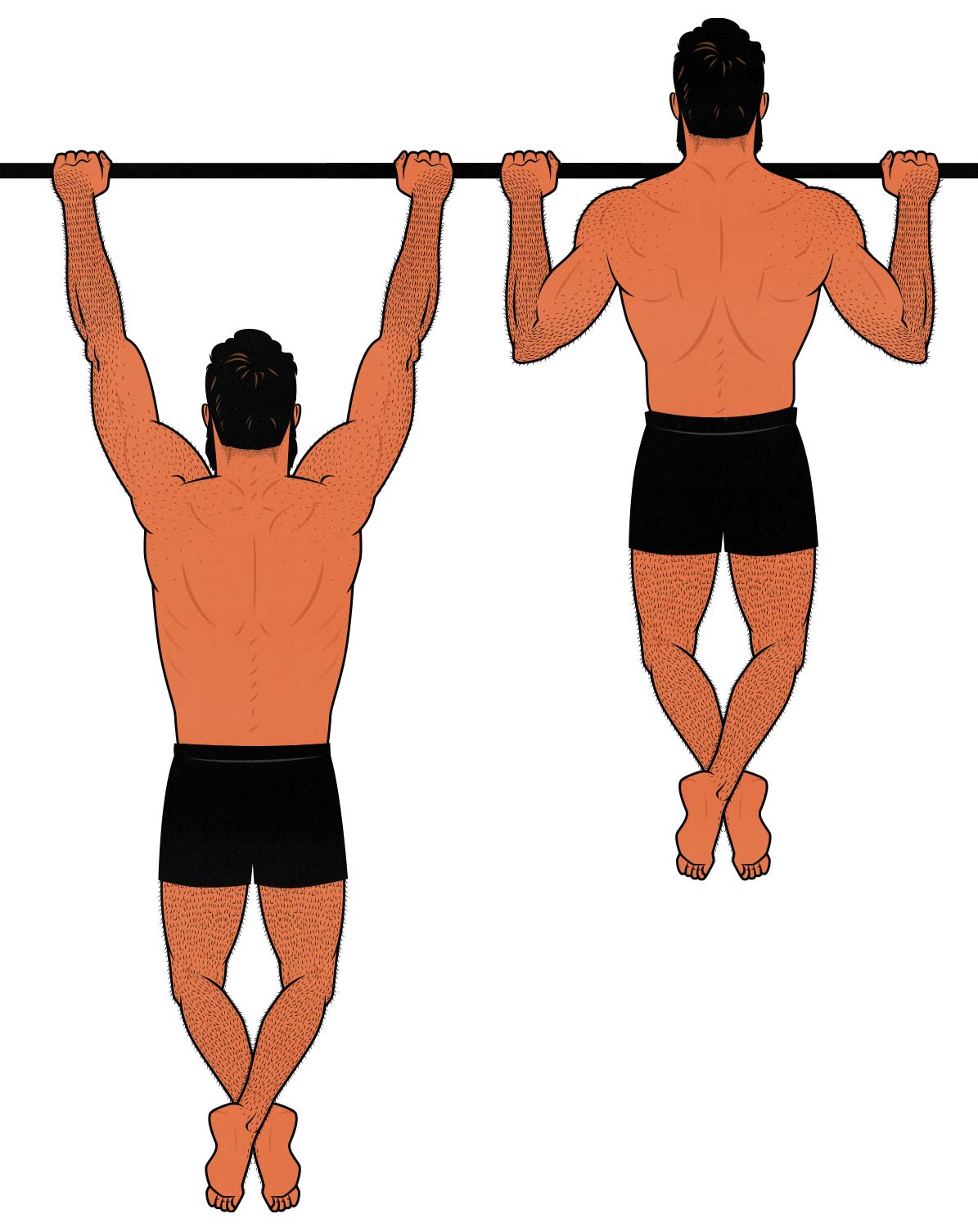
Biceps Exercises
Back exercises work your biceps, but not nearly as well as biceps curls do. That’s because your biceps cross your shoulder joint, pulling your arms forward. Most back exercises pull your arms backward. That prevents your biceps from fully engaging (study).
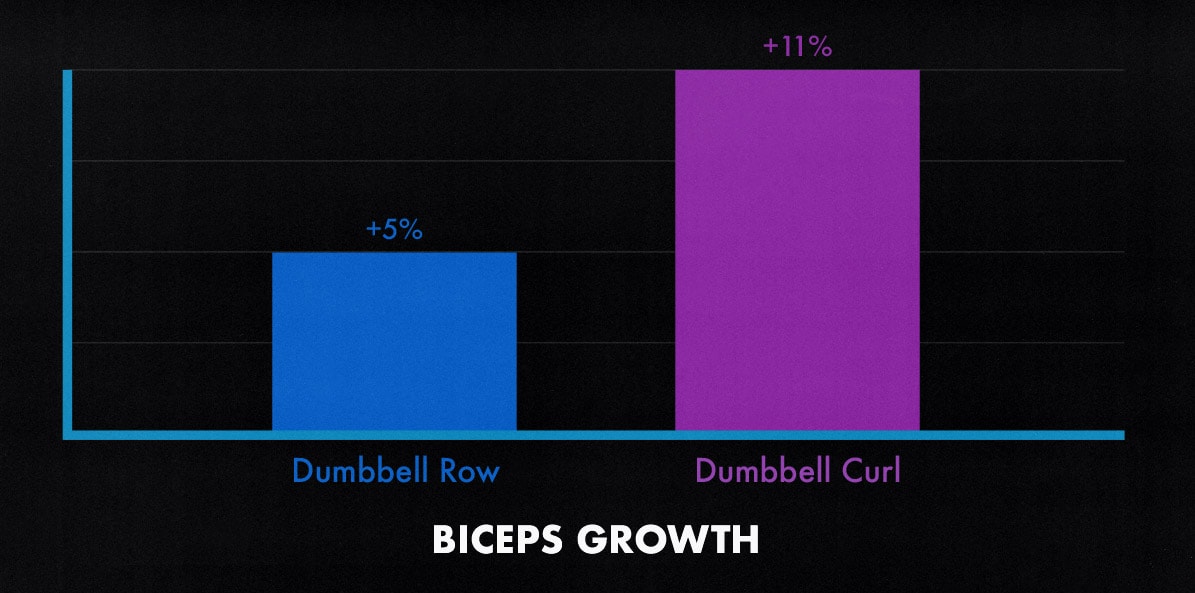
You don’t have to do biceps curls on Back Day. You could relegate them to Arm Day. Some could argue that the stimulation from pulling exercises is enough. But the world would be a better place with more of you in it. Better to stimulate as much muscle growth as you can.
- Dumbbell curls: A simple but effective variation that’s perfect for beginners.
- Barbell curls: A heavier, more stable variation that’s great for intermediates. It’s a bit easier to gradually add weight. If they hurt your elbows, try using an angled curl-bar or “EZ-Bar.”
- Lying biceps curls: These stretch your biceps at the shoulder joint, challenging them through a deep range of motion. They’re fantastic for stimulating muscle growth, especially in the long head. I love these.
- Preacher curls: These have a great resistance curve, working your biceps harder at the bottom of the range of motion. However, unlike with lying curls, your biceps are shortened at the shoulder joint. This might make them slightly less effective for the long head.
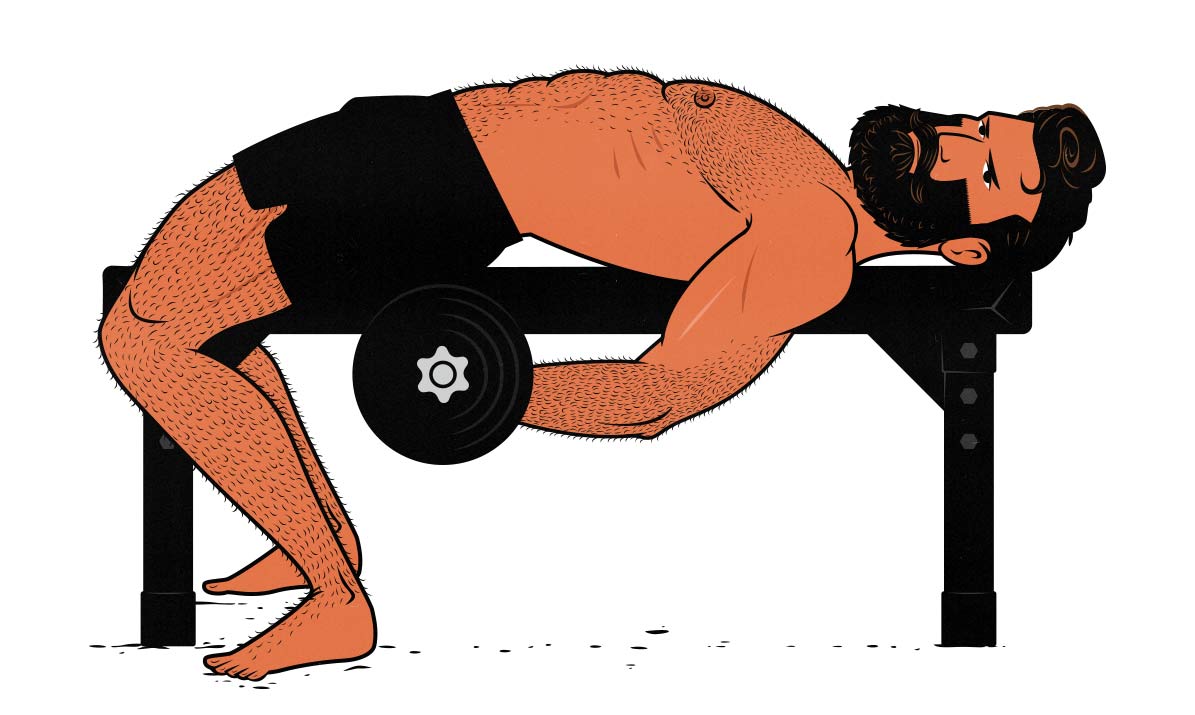
Training Volume Per Muscle
You need around 9–18 sets per muscle per week to maximize your rate of muscle growth. Back muscles tend to be able to handle more volume than other muscles, though. You might want to err on the side of doing more sets.
It also helps to train each muscle at least twice per week. If you include a deadlift variation on Leg Day, that will train your back muscles twice. If you include chin-ups on Arm Day or face pulls on Shoulder Day, you’ll be training your back muscles 3–4 times per week.
Most of your back muscles work together when you pull things towards you, but each exercise still emphasizes different back muscles. It helps to give each of your back muscles a chance to be the limiting factor.
With that in mind, let’s move on to the workouts.
Back Day Workouts
Classic Back Day Workout
| EXERCISE | SETS | REPS |
|---|---|---|
| Conventional Deadlifts | 2 sets | 6–10 reps |
| Pull-Ups (or Pulldowns) | 4 sets | AMRAP |
| Neutral-Grip Cable Rows | 4 sets | 10–15 reps |
| Biceps Curls | 3 sets | 8–15 reps |
| Seated Wrist Curls | 3 sets | 10-15 reps |
This is a classic Back Day workout with exercises that train every muscle in your back. There should be just enough volume to maximize your rate of muscle growth.
You can choose whichever deadlift variation you prefer, but conventional deadlifts are great for emphasizing your back muscles.
After your deadlifts, you can do pull-ups or pulldowns with an overhand grip. This will give your lower lats some extra love. Then you can do a row variation, such as seated cable rows or dumbbell rows.
With your back training done, you can move to biceps curls and wrist curls for your arms. You can use any biceps curl variation. I like curl-bar curls and lying dumbbell curls.
Minimalist Back Day Workout
| EXERCISE | SETS | REPS |
|---|---|---|
| Chin-Ups | 4 sets | 6–12 reps |
| Seated Cable Rows | 4 sets | 8-12 reps |
| Dumbbell Curls | 3 sets | 10-15 reps |
One of the great advantages of training 4+ days per week is that you can do minimalist workouts. I don’t like to use minimalist routines while bulking, but I love them during periods of maintenance. I’ve used this particular workout for almost a year now, adding little variations every couple of months.
This workout combines an underhand chin-up (with tucked elbows) and a seated cable row (ideally with a wider grip). If you prefer, you could combine wider-grip pull-ups with a tucked-elbow row variation, such as one-arm dumbbell rows.
To get the most out of this routine, I recommend doing deadlifts on Leg Day. If you aren’t, replace the seated cable rows with Romanian deadlifts.
Maximalist Back Day Workout
| EXERCISE | SETS | REPS |
|---|---|---|
| Conventional Deadlifts | 2 sets | 10–15 reps |
| Chin-Ups | 4 sets | AMRAP |
| Neutral-Grip Cable Rows | 4 sets | 10–15 reps |
| Overhand Lat Pulldowns | 3 sets | 10–15 reps |
| Lying Biceps Curls | 3 sets | 8-12 reps |
| Face Pulls | 3 sets | 10–15 reps |
This Back Day workout has a little bit of everything. It starts with a deadlift to train your entire back, including your spinal erectors. Then it works through the various upper-back exercises one by one, giving you every pull from every angle.
It also has the highest training volume, but that doesn’t necessarily mean it’s the best. It all depends on how much volume you can benefit from and recover from. This is too much for me, but for you, it might be perfect.
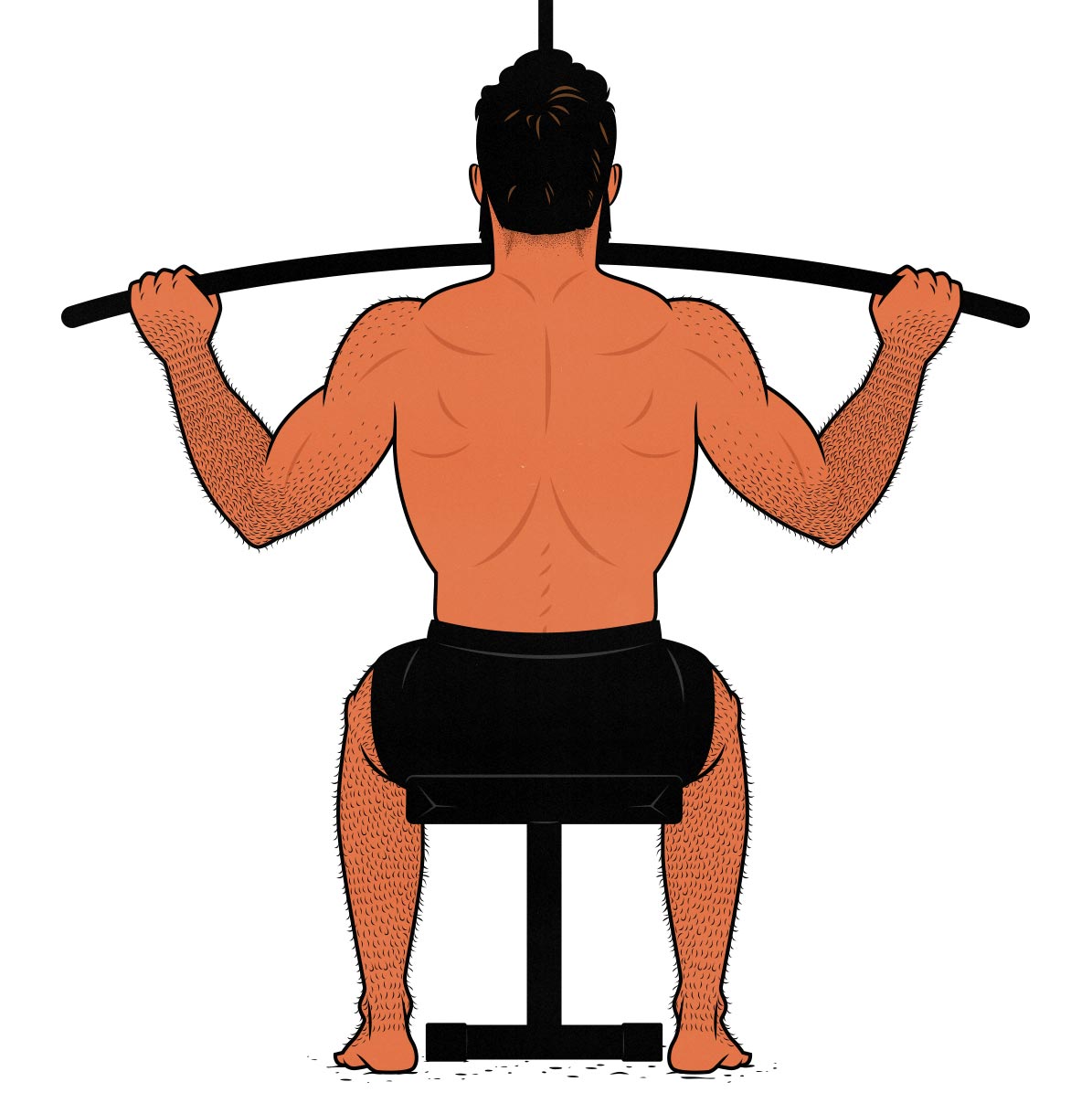
Back Day Training Guidelines
Back Days are part of the bodybuilding tradition. They’re designed to stimulate muscle growth, they train a single movement pattern, and they use relatively short rest times.
- Exercise Selection: These exercises are just defaults. Choose exercises that suit your body and your goals. If you prefer pull-ups to chin-ups, choose pull-ups.
- Volume: We have 5 exercises in the classic workout. That should be enough to maximize your rate of muscle growth, provided you give each set your best effort. But different people are different. You might do better with the minimalist or maximalist workouts.
- Progression: The goal is to get progressively stronger over time. Try to outlift yourself, adding 5 pounds here and eking out an extra rep there.
- Rest times: Classic Back Day workouts use short or moderate rest times. You could rest for 3 minutes between sets on the first exercise, 2 minutes for your other compound exercises, and 1 minute for isolation exercises.
- Reps in Reserve: Leave 2–3 reps in reserve when doing deadlifts. Take every other exercise to the cusp of failure. Back muscles grow well when you push them hard.
- Muscle-Building Diet: You need enough food to fuel muscle growth. If you’re skinny-fat or overweight, you can get extra energy from your body fat. If you’re thin or lean, you may need to gain weight to make progress.
Alright, that’s it for now. If you have any questions, drop them below. I’ll answer all the comments. If you want the latest research and methods in your inbox, we have a free muscle-building newsletter.



